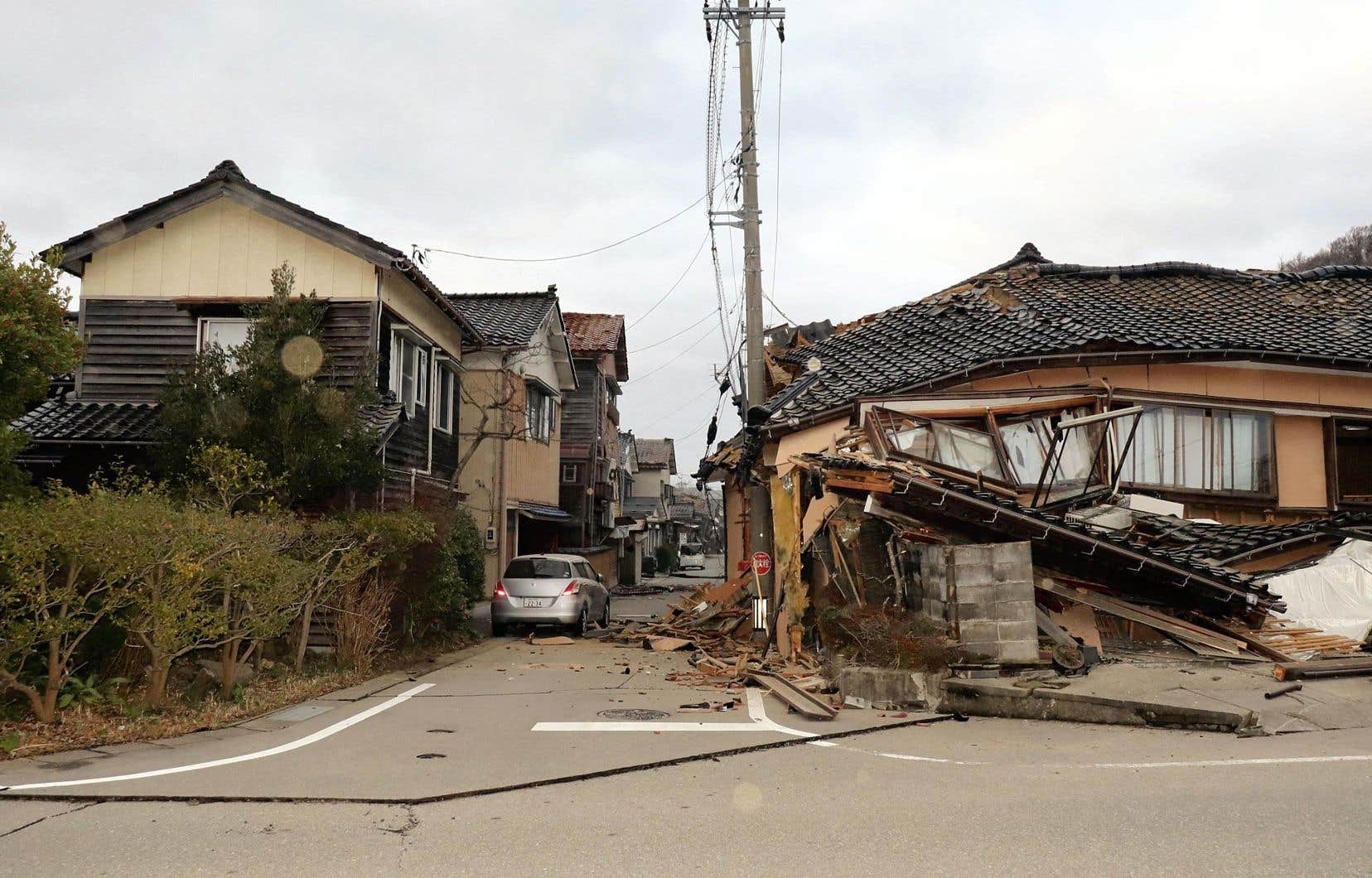Powerful earthquakes struck central Japan on Monday, causing extensive damage and triggering a tsunami more than a meter high in places, while people in affected areas were asked to evacuate to higher ground.
Two people are believed to have died after the 7.5 magnitude earthquake struck Ishikawa Prefecture on the Sea of Japan side of the main island of Honshu at 4:10 p.m., according to media reports. American Institute of Geophysics (USGS).
Television channels interrupted their normal services by broadcasting special programs. During one of them, Prime Minister Fumio Kishida urged residents of dangerous areas to “evacuate as soon as possible” to higher ground.
“We realize that your home and possessions are precious to you, but your lives are more important than anything! Run to the highest ground possible,” an NHK TV presenter told viewers.
Defense Minister Minoru Kihara announced that 1,000 troops were preparing to go to the region, while another 8,500 were also standing by. Around twenty military planes were sent to assess the damage.
The Japan Meteorological Agency (JMA) recorded more than 50 earthquakes of magnitude 3.2 or greater in the space of four hours on the Noto Peninsula, north of Ishikawa Prefecture, which borders the Sea of Japan. .
Threat of tsunami “dismissed”
The 7.5 magnitude earthquake was felt as far away as Tokyo, located more than 300 km as the crow flies from Noto.
“I’ve never experienced that before, it was scary. I went out straight away [de la maison] but the ground was shaking,” an elderly man told NHK.
A tsunami alert was immediately issued by the JMA, warning that waves up to five meters high were to be feared. The agency later lowered this theoretical maximum level to three meters.
However, this worst-case scenario did not materialize: the largest tsunami waves, measured in the port of Wajima on the Noto Peninsula, reached 1.2 meters high.
The threat of a tsunami is “largely over”, now estimates the Pacific Tsunami Warning Center (PTWC), an American agency based in Hawaii.
The damage caused directly by the earthquakes was more significant, particularly on old houses, generally built of wood.
Government spokesman Yoshimasa Hayashi said he was aware of “six cases” of people in collapsed buildings in Ishikawa Prefecture.
“Horrible situation”
Images from Japanese television also showed a major fire devastating several buildings in Wajima.
In a video posted on the social network X, we could see old wooden houses collapsed.
“This is the Matsunami district of Noto. We are in a horrible situation. Please come help us. My city is in a horrible situation,” one person implores in this video.
Other images on Japanese television showed evacuees waiting outside in the cold, some covering themselves with thick blankets, others holding children.
Cities in the Russian Far East, including Vladivostok, in turn issued an “alert” on Monday in the face of a possible risk of a tsunami, but without carrying out evacuations at this stage.
About 33,500 homes were left without power in Japan’s three counties of Ishikawa, Toyama and Niigata, all located on the Sea of Japan, according to local electricity providers.
Normal state of nuclear power plants
Several highways near the epicenters have been closed to traffic and high-speed train traffic (shinkansen) between Tokyo and Ishikawa was also interrupted, Japan Railways announced.
Located on the Pacific Ring of Fire, Japan is one of the countries with the most frequent earthquakes in the world.
The archipelago therefore applies extremely strict construction standards, so that buildings are generally resistant to powerful earthquakes, and residents are experienced in these kinds of situations for which they prepare regularly.
But Japan is haunted by the memory of the terrible 9.0 magnitude earthquake followed by a giant tsunami in March 2011 on the northeastern coast of the country, a disaster which left some 20,000 dead and missing.
This disaster also led to the Fukushima nuclear accident, the worst since Chernobyl in 1986.
“No anomaly” has so far been detected in the nuclear power plants closest to the earthquakes that occurred on Monday, including in Shika, precisely located in the department of Ishikawa, according to the Japanese nuclear safety authority (NRA). ).
